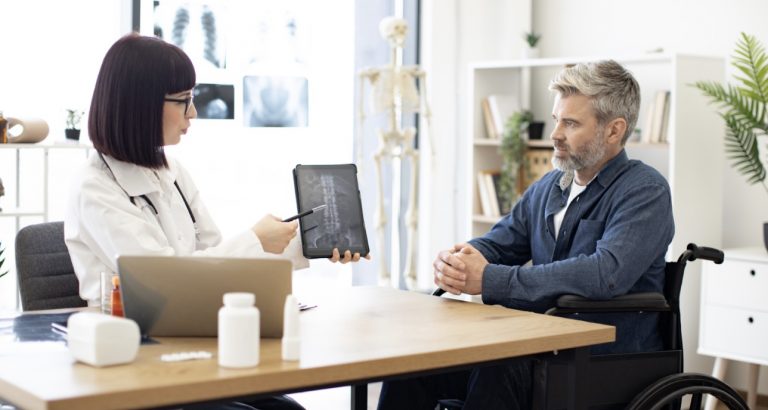Scoliosis is an illness associated with unusual spine curvature, which may cause pain, posture problems, and organ function problems. That curve can have ripple effects on the body regarding aesthetics, overall health, and well-being. Thankfully, multiple ways to treat the condition can help keep it at bay, and by learning more about these options, you can take control. Below, we’ll examine the different treatment options, the advantages of each, and what patients should consider when choosing care to realise the best results.
What Is Scoliosis?
Scoliosis is common in children of all ages, usually starting at puberty because of growth spurts. The curvature of the spine is measured in degrees and can be mild to severe, and every case presents its one-of-a-kind challenges. Most symptoms are back pain, which affects daily activities and the quality of life, uneven shoulders, and an uneven waist. Scoliosis treatment aims mainly at slowing or stopping the curve progression, reducing pain, improving function and appearance, and allowing patients to have a healthier life and live easily.
Types of Scoliosis Treatment
-
Observation
In mild cases of scoliosis, especially in children and adolescents, the doctor may take a “wait and see” approach. Again, regular check-ups will monitor how the curvature is changing. You may never even need surgery if the curve is stable and not producing symptoms.
-
Bracing
A brace may be indicated when the curvature is moderate, and the patient is still growing. A brace can only stop the curvature from advancing, not correct it. Remember that braces work best when they can be worn consistently as prescribed. There are several types of braces.
- TLSO Brace: A brace that covers the torso from neck to hip.
- Boston Brace: The Boston Brace is the mainly used design. It might fit over different levels of the torso and apply pressure to the spine.
-
Physical Therapy
Scoliosis care has to do a lot with physical therapy. A physical therapist can provide a customised exercise program to increase flexibility, strengthen the core, and correct posture. Some of these exercises are intended to provide back relief and are designed to help align your spine or balance your muscles.
-
Chiropractic Care
Chiropractic treatment, however, can help alleviate the pain, ease the discomfort, and improve spinal mobility but will not restore that curve to normal. Through spinal manipulation and therapeutic exercises, chiropractors can help to keep your spine healthy.
-
Surgical Options
Surgery will be considered in severe instances, precisely when scoliosis is related to pain or the disappearance of respiratory function. Spinal fusion is the most common surgery for scoliosis.
-
Correcting the Curve
The surgeon aims to realign the spine and decrease the curve. Bone grafts will be incorporated into fusing particular vertebrae in the spine so that the canary is almost always the end of any management arm. It is a nuanced, high-stakes activity requiring diligence in fathoming its risk-benefit balance.
What to Consider When Seeking Scoliosis Treatment
-
Consultation with Specialists
If you suspect that you may have scoliosis, or if it has already been diagnosed in your child, schedule an appointment with a specialist (orthopaedic surgeon or spine specialist) immediately. It can take someone with years of practice to read you right and suggest a treatment that works with how your body operates while accommodating whatever matters most in terms of setting up parameters for treatment. Talking to a skilled expert can also address your concerns and obtain reassurance throughout the treatment process. Knowing your options also puts you in a position of responsibility and empowerment.
-
Age and Growth Potential
The age of the patient significantly impacts what therapy to use. Early detection can help prevent progressing curvature as children and adolescents grow, so checking them regularly during these growth years is essential. For adults, however, the treatment selection could be different because it depends on the severity of a condition, and their choice may consider pain management or mobility. Therefore, open discussions with healthcare providers about age-specific strategies for optimal management suited to the individual patient are essential.
-
Lifestyle and Activity Level
Think about how having scoliosis affects your day-to-day living and activities of daily life. If pain and discomfort are getting in the way of you living your life, don’t be afraid to speak up and talk to your healthcare provider about other solutions for managing pain or making some changes in your behaviour. Implementing physical therapy, exercise, and ergonomics can improve daily function and overall quality of life. By understanding the systemic effects of scoliosis, a fuller picture can be gained in developing an overall scoliosis treatment and self-care plan that might result in better long-term success.
-
Ongoing Monitoring
Scoliosis often needs to be monitored and managed on an ongoing basis. This is particularly important in growing children; regular follow-up visits help ensure changes are only allowed to progress for as long as necessary. Timely interventions such as changes to bracing patterns or consideration of surgery are possible with continual evaluation. Being proactive about monitoring can help manage the condition well in the long haul.
Conclusion
The severity of the condition, age, and health status of the patient will decide the scoliosis treatments. From observation and bracing to physical therapy and surgical solutions, many roads lead to the successful treatment of scoliosis; by knowing what these different options offer, prospective patients and their loved ones can choose the best treatments for them in an educated manner. If you or someone else has symptoms of scoliosis, contact experts to find out what treatment options are best for living a healthier life without pain. With proper handling, many people with scoliosis can enjoy doing what they love and live fully.



0 Comments